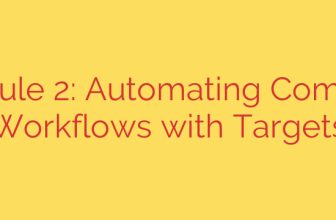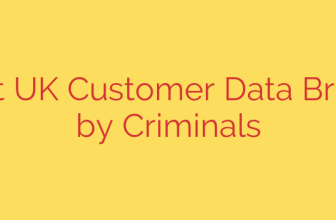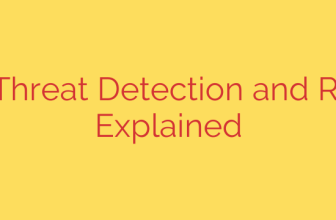
The PAMix “Audio Mixer”: Unmasking a Dangerous Information-Stealing Malware
In the digital world, users are constantly searching for free tools to enhance their experience, from video editors to system utilities. However, this search can lead them into a trap set by cybercriminals. One of the most recent and deceptive threats is the PAMix malware, a dangerous tool disguised as a helpful audio mixer application.
What appears to be a legitimate program is, in reality, a potent information-stealing trojan designed to harvest sensitive data directly from your computer. Understanding how this malware operates is the first step in protecting yourself from its devastating impact.
What Is PAMix and Why Is It So Dangerous?
At its core, PAMix is not an audio utility at all. It is a malicious software program engineered to infiltrate a user’s system and exfiltrate a wide range of personal and financial information. Once executed, it works silently in the background, making it difficult to detect until it’s too late.
The primary goal of the PAMix malware is theft. It meticulously scours an infected system for valuable data, including:
- Browser Credentials: Usernames and passwords saved in web browsers like Chrome, Firefox, and Edge.
- Cookies and Session Data: This allows attackers to bypass two-factor authentication and hijack active login sessions for email, social media, and financial accounts.
- Cryptocurrency Wallet Information: It specifically targets popular crypto wallets to steal private keys and drain funds.
- System Information: Gathers details about your operating system, hardware, and installed software, which can be used for further targeted attacks.
- Sensitive Files: It can search for and upload documents, images, and other files from your desktop and document folders.
This stolen data is then sent to a remote command-and-control (C2) server operated by the attackers, where it can be sold on dark web marketplaces or used for identity theft, financial fraud, and other malicious activities.
Common Infection Vectors: How PAMix Spreads
Cybercriminals use several common tactics to trick users into downloading and installing the PAMix malware. Awareness of these methods is crucial for prevention.
- Cracked Software and Pirated Content: One of the most frequent distribution channels is through websites offering “cracked” versions of premium software, games, or activation tools (keygens). Users seeking to avoid paying for software unknowingly download a bundle that includes the PAMix trojan.
- Phishing Campaigns: Attackers may send emails or direct messages that appear to be from a legitimate source, encouraging the recipient to download an “important” application or a “software update.” The download link, however, leads directly to the malware.
- Deceptive Websites and Advertisements: Malicious ads or fake download portals designed to look like official software repositories can trick users into installing the fake audio mixer. These sites often use high-pressure tactics, claiming the user’s system requires an “audio driver update.”
How to Protect Yourself and Remove PAMix Malware
Protecting your digital life from threats like PAMix requires a combination of proactive security habits and the right tools. If you suspect your system is infected, immediate action is necessary to minimize the damage.
Proactive Steps to Prevent Infection
- Download Software from Official Sources Only: Always download applications directly from the official developer’s website or trusted app stores. Avoid third-party download sites, torrents, and software cracks, as they are major hubs for malware distribution.
- Use a Reputable Antivirus Solution: A modern, comprehensive security suite is your first line of defense. Ensure its real-time protection is enabled and that you run regular full-system scans.
- Enable Multi-Factor Authentication (MFA): MFA adds a critical layer of security to your accounts. Even if attackers steal your password, they won’t be able to log in without the second verification step (e.g., a code from your phone).
- Be Skeptical of Unsolicited Offers: Treat unexpected emails, pop-ups, and messages with suspicion, especially those urging you to download software. Verify the source before clicking any links or downloading attachments.
- Keep Your System and Software Updated: Regularly install updates for your operating system, web browser, and other applications. These updates often contain critical security patches that close vulnerabilities exploited by malware.
Steps for Removing an Active Infection
If you believe your computer has been compromised by PAMix or another trojan, follow these steps immediately:
- Disconnect from the Internet: Unplug your Ethernet cable or turn off your Wi-Fi to prevent the malware from sending any more of your data to the attackers.
- Run a Full System Scan: Boot your computer in Safe Mode (if possible) and run a complete, in-depth scan using your trusted antivirus or anti-malware software. Follow its instructions to quarantine and remove all detected threats.
- Change Your Passwords: Once the system is clean, use a different, uninfected device to change the passwords for all your critical accounts, including email, banking, social media, and any other site where you stored login credentials. Prioritize accounts that did not have MFA enabled.
- Monitor Your Accounts: Keep a close watch on your financial statements and online accounts for any suspicious activity. Report any unauthorized transactions or access to the relevant institution immediately.
By staying vigilant and practicing good cybersecurity hygiene, you can significantly reduce your risk of falling victim to deceptive and destructive malware like PAMix.
Source: https://www.linuxlinks.com/pamix-audio-mixer/








